
Shift Pointers
- Author: Wayne Colonna, Technical Editor
We’ve all worked in a shop when, for no apparent reason, four Honda transmission failures showed up in the same week – then a month went by before we saw another one.
Well, it’s not really all that different for people answering calls on a tech line. Our technicians receive hundreds of calls every day, mostly dealing with the most-popular vehicles and the codes and failures associated with them. But every once in a while, we’ll get that one really unusual call that makes you scratch your head. Even more intriguing is when numerous calls come in, more or less at the same time, all dealing with the same odd problem.
We had such a case just recently. We field many calls regarding the Hyundai and Mitsubishi F4A40/50 series transmission. Usual complaints on this unit are that it’s in failsafe or there’s a 2-3 shift flare. But on one particular day, we received three tech calls in a row with an out-of-the-ordinary problem. Two were regarding a 2001 Dodge Stratus with a 3.0-liter V-6 engine, the other a 2002 Chrysler Sebring with the same 3.0-liter V-6 engine.
Before the day was over, we got two more calls, on a 2001 Mitsubishi Eclipse and a Gallant, both of which also had the 3.0-liter V-6. Each vehicle had experienced the same failure between 50,000 and 60,000 miles before it arrived in the shop.
All five vehicles had two things in common: Each had the same size engine and the same transmission model – the F4A51 transaxle. The complaint was no movement either forward or reverse, and the fluid was full and described as “not bad, or normal.”
The failure after disassembly was broken pump gears (see Figure 1); in some of the vehicles, the pump was destroyed. The rest of the transmission showed normal wear, except for a broken low/reverse spiral cushion wave spring.
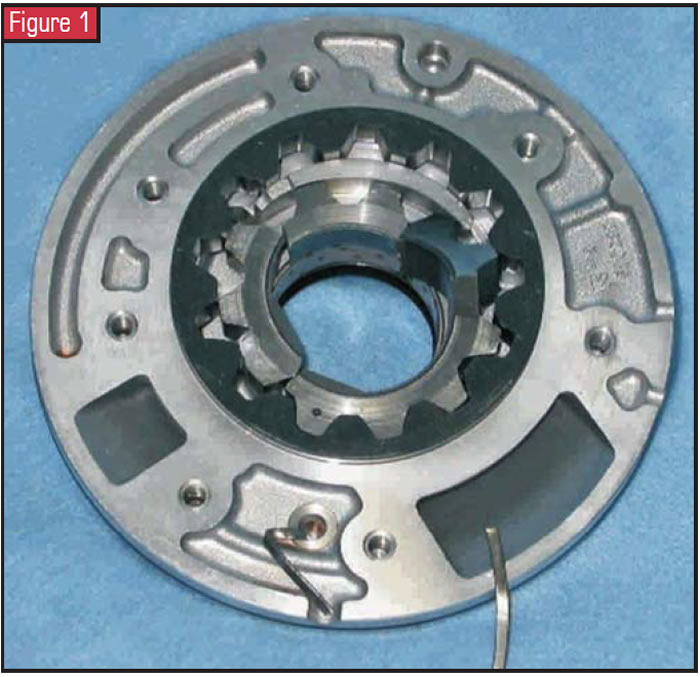
Figure 2 gives you a closer look at the damaged pump gear. Notice a piece of the wave spring that lodged in the pump gears and destroyed the pump.
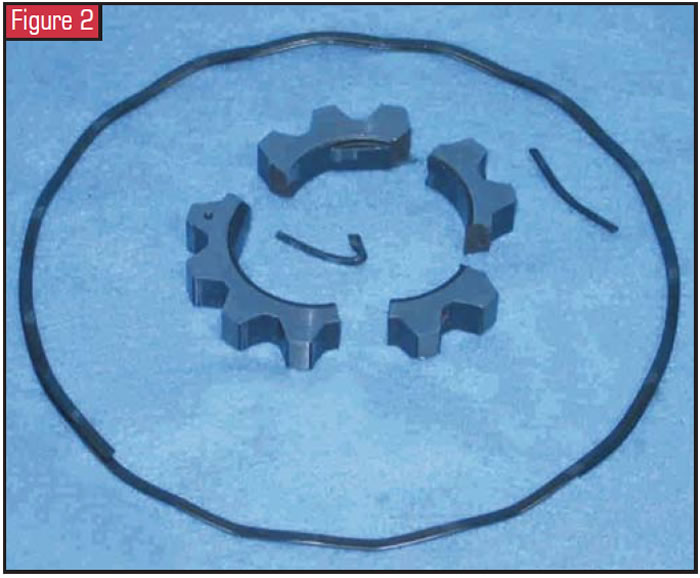
Now, you’re probably wondering the same thing I did: How is it possible for a broken piece of metal of that size to get past the filter and into the pump?
Figure 3 shows the broken wave spring; Figure 4 shows the location of the wave spring. Only the F4A51 transaxle behind the 3.0 V-6 engine has this spiral-type wave cushion spring. The F4A41 behind the four-cylinder engine has a typical circular one-piece cushion spring (see Figure 5). I have not received any tech calls on the one-piece cushion spring braking.
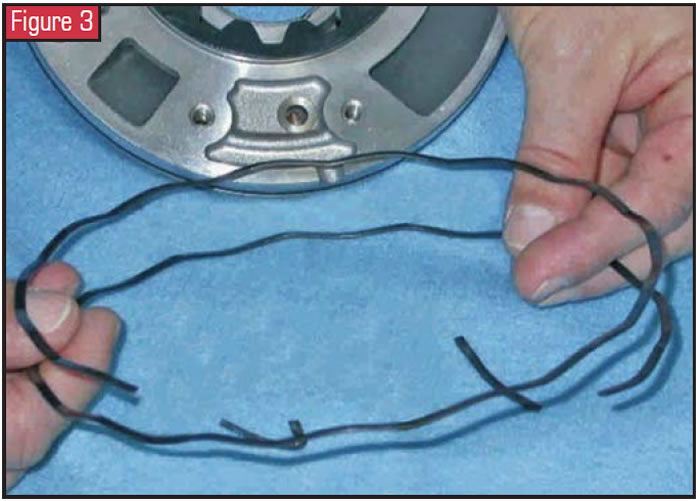
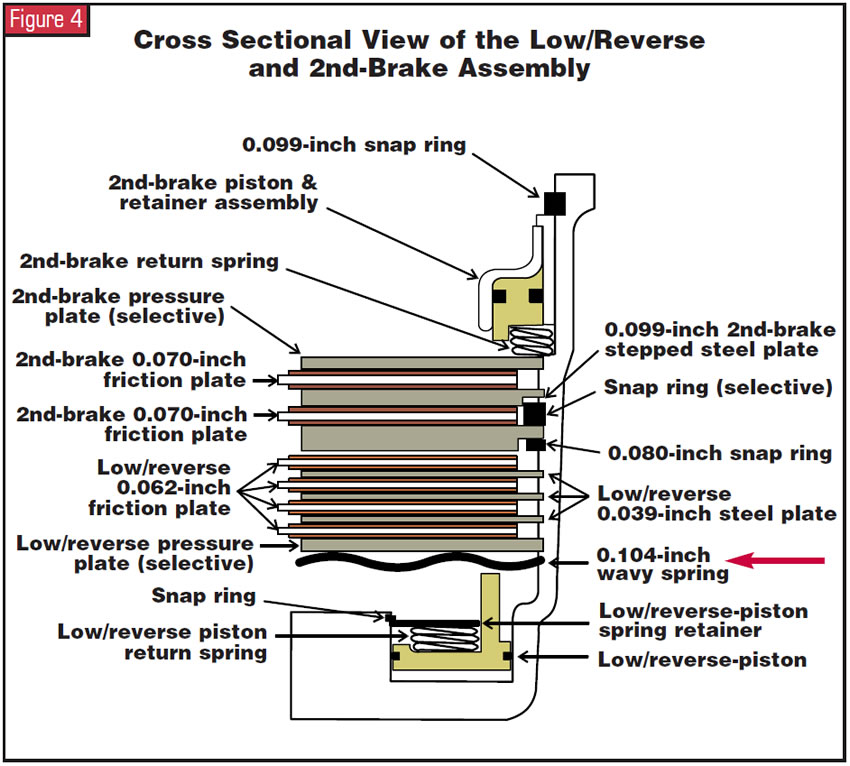
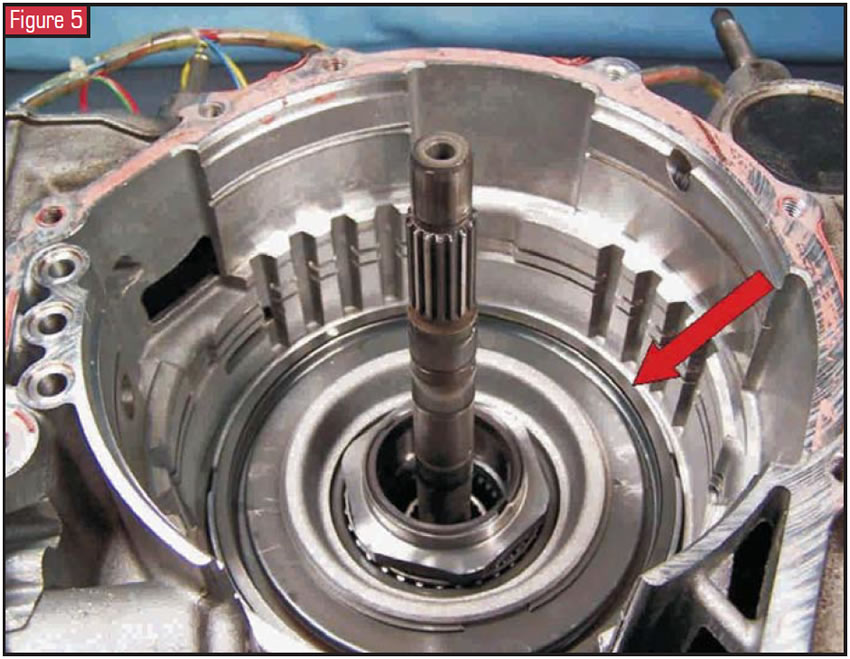
None of the transmissions involved in these tech calls had been repaired previously. They all had the original filters (the location of the filter is internal to the transmission, and there is no bottom pan to access these filters, so the transmission case would have to be separated to remove them).
So we decided to cut the original filter open and see whether it was even possible for pieces the size of those found in the pump to get past the filter media. As you can see in Figure 6, the actual filter that was cut open had a section of about three to four inches of media that did not get clamped down along the edge where the filter halves meet. Several OE filters were cut open, all with the same results (see Figure 7).
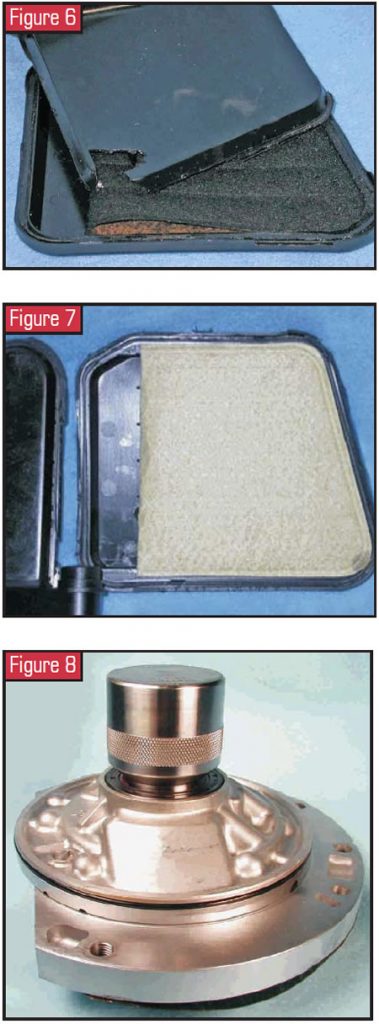
At this point, we decided to take a new aftermarket filter and cut it open to see whether the problem also existed in the aftermarket versions. We dissected an SPX Filtran filter, and as you can see in Figure 8, there was no mistake. The filter media was crimped all the way around the outer edge.
I don’t know whether a replacement cushion spring is available from Mitsubishi, Hyundai, Dodge or Chrysler, and I’ve been told from a Dodge dealership that this part number MR534166 was the latest number available. They had no knowledge of this part being updated in any way.
The good news is that with the aftermarket F4A51 filter, if the new snap ring breaks, no big pieces are going to get into the pump.
One other problem that has plagued this unit also has to do with the pump. After rebuild, the transaxle returns with the pump bushing destroyed and a leak from the front seal. This may occur in a couple of days or as little as a few minutes, during the road test. The problem is that this pump is aligned at the plant, and there are no leading edges that can be aligned with a band-type alignment tool or with alignment studs. Several technicians have tried to align the pump with the converter and have had disastrous results. After two or three pumps returning with the same failure, I will get a frustrated technician calling with the question, “Is there a $%@#$ alignment tool for this pump?!”
Well, at one time there wasn’t, but now Sonnax has an alignment tool available that works great. The Sonnax part number is #41005-TL, and the tool comes with a pump bushing (see Figure 9).
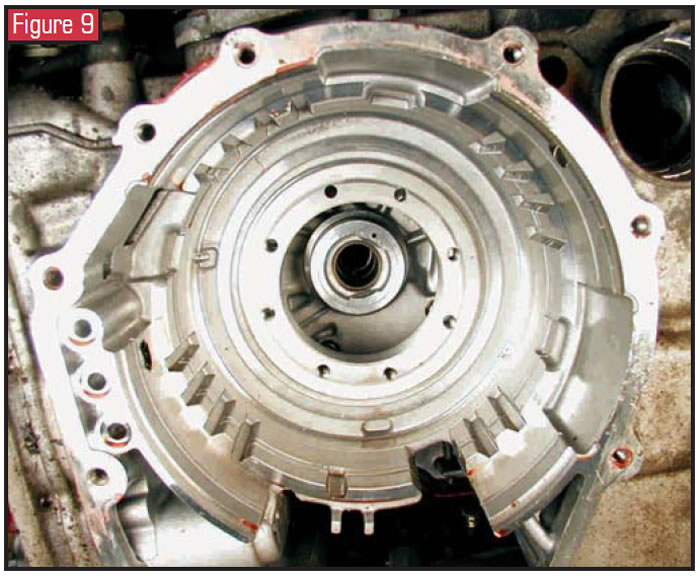
The only possible way to align this pump without the tool (I have done this procedure myself, so I know it works) is to assemble the pump with the bolts finger tight and place it onto the main case with the bellhousing bolted to the case, and with the transfer gear removed from the center of the case so that you can see the pump bolts through the rear of the case (see figures 9 and 10). Then, with an extension, a swivel and a Torx bit of the proper size, you can tighten the pump bolts with a hand ratchet. Then remove the pump and torque it to specifications.
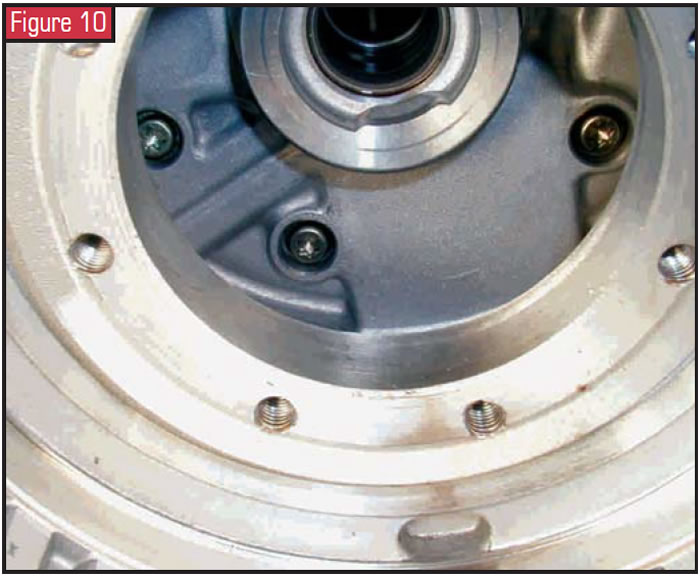
Thanks to Billy at P & B Transmissions, Casey at Ed’s Automatic Transmission and Bill at Eastern Transmission for sending me the pumps and filters for this article.














